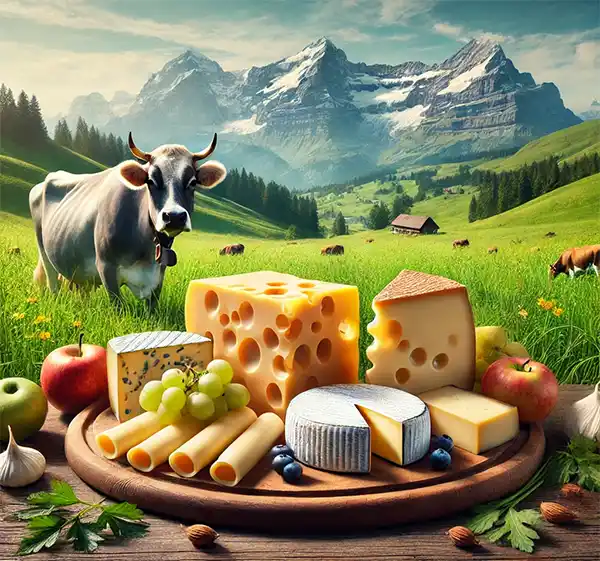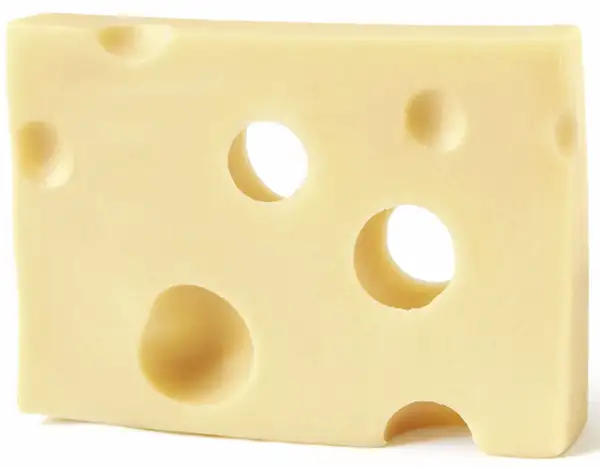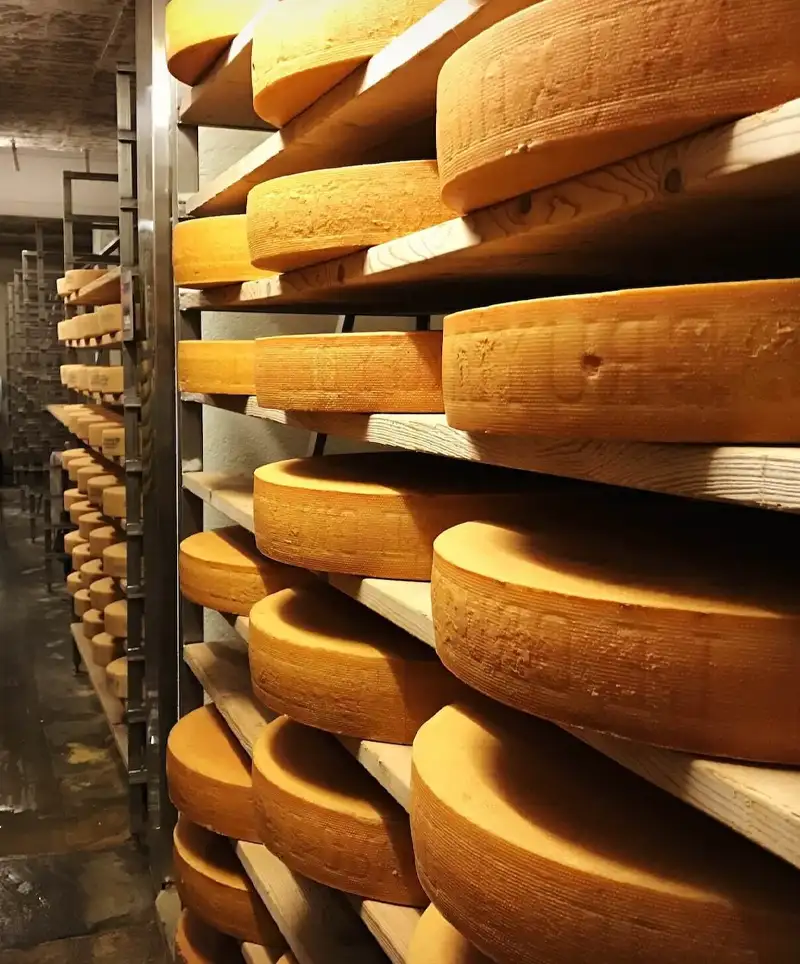The Holiest of Cheeses
Every year on January 2nd, cheese enthusiasts and culinary aficionados celebrate Swiss Cheese Day. This delightful day honors one of the most iconic and beloved cheeses in the world, known for its distinctive holes and nutty flavor. Swiss cheese, or Emmental as it's traditionally known, has a rich history and a multitude of uses that make it a staple in kitchens everywhere. Let’s dive into the fascinating world of Swiss cheese, explore its origins, understand its unique characteristics, and find out why it deserves a day of its own.
A Brief History of Swiss Cheese
Swiss cheese, particularly Emmental, originates from the Emmental region in the canton of Bern, Switzerland. The production of this cheese dates back to the 13th century, making it one of the oldest cheeses still enjoyed today. Alpine farmers traditionally made Swiss cheese during the summer months when cows were moved to high-altitude pastures to graze on lush, green grass. This rich diet contributed to the high-quality milk used in cheese production.
 The cheese-making process was a community affair, with farmers pooling their milk to produce large wheels of cheese that could weigh up to 200 pounds. These wheels were then aged in caves or cellars, where they developed their characteristic flavor and texture. Over time, the techniques for making Swiss cheese were refined, and the cheese became a popular export, spreading its delicious influence far beyond the borders of Switzerland.
The cheese-making process was a community affair, with farmers pooling their milk to produce large wheels of cheese that could weigh up to 200 pounds. These wheels were then aged in caves or cellars, where they developed their characteristic flavor and texture. Over time, the techniques for making Swiss cheese were refined, and the cheese became a popular export, spreading its delicious influence far beyond the borders of Switzerland.
The Science Behind the Holes
One of the most distinctive features of Swiss cheese is its holes, or "eyes." These eyes are formed during the cheese-making process and are a result of bacterial activity. Specifically, three types of bacteria are used in the production of Swiss cheese: Streptococcus thermophilus, Lactobacillus helveticus, and Propionibacterium freudenreichii. The latter is responsible for the formation of the holes.
During the fermentation process, Propionibacterium freudenreichii consumes lactic acid and releases carbon dioxide gas. This gas forms bubbles within the cheese, creating the characteristic holes. The size and number of holes can vary depending on factors such as temperature, aging time, and the particular strain of bacteria used. Interestingly, in the early 2000s, Swiss cheese producers noticed that the holes in their cheese were becoming smaller. Researchers discovered that modern dairy farms were too clean—tiny hay particles that used to fall into the milk and help form larger holes were now absent. Adjustments in the cheese-making process have since been made to ensure Swiss cheese maintains its traditional appearance.
Varieties of Swiss Cheese
While Emmental is the most famous variety of Swiss cheese, there are several other types that deserve recognition:
- Gruyère: Named after the town of Gruyères, this cheese is known for its dense texture and complex flavor, which ranges from creamy and nutty when young to earthy and assertive when aged.
- Raclette: This semi-hard cheese is traditionally used for melting. The name "raclette" comes from the French word "racler," meaning "to scrape," which is exactly what you do after melting the cheese over a fire or grill.
- Appenzeller: This cheese is washed with a mixture of wine, cider, and spices during the aging process, giving it a tangy and aromatic flavor.
- Tête de Moine: Translated as "Monk’s Head," this cheese is traditionally shaved into delicate rosettes using a tool called a girolle. Its strong flavor and beautiful presentation make it a favorite for cheese boards.
 Swiss Cheese in Cuisine
Swiss Cheese in Cuisine
Swiss cheese is incredibly versatile and can be used in a variety of dishes. Here are some classic and creative ways to enjoy this delicious cheese:
- Fondue: Perhaps the most famous use of Swiss cheese, fondue is a communal dish where melted cheese is enjoyed with bread, vegetables, and other dippables. A blend of Gruyère and Emmental is commonly used for the perfect balance of flavors.
- Raclette: This dish involves melting Raclette cheese and scraping it over potatoes, pickles, and cured meats. It’s a hearty and satisfying meal, perfect for a cozy evening.
- Swiss Cheese Sandwiches: From the classic ham and Swiss to more adventurous combinations like Swiss cheese and apple slices, this cheese adds a delightful tang to any sandwich.
- Cheese Boards: A selection of Swiss cheeses can elevate any cheese board. Pair them with fruits, nuts, and a good bottle of wine for a sophisticated snack.
- Baking: Swiss cheese melts beautifully, making it ideal for baking into quiches, tarts, and gratins. Its nutty flavor complements a wide range of ingredients, from vegetables to meats.
Fun Facts About Swiss Cheese
- Weighty Matters: Traditional wheels of Emmental can weigh up to 200 pounds and measure about 3 feet in diameter. That’s a lot of cheese!
- Cheese Currency: In medieval Switzerland, cheese was sometimes used as a form of currency. Farmers would pay their taxes and settle debts with wheels of cheese.
- Cheese with Altitude: Swiss cheese made from milk produced at higher altitudes is often considered superior due to the richer pastures available to the cows. The cows' diet of alpine grasses and herbs gives the cheese a unique flavor.
Reflections on Swiss Cheese
Swiss cheese is the James Bond of the cheese world—smooth, suave, and a bit mysterious with all those hidden holes. It's the cheese that makes you wonder if it’s more air than dairy, yet it never fails to impress with its rich, nutty flavor. Imagine trying to cut a perfect slice without turning it into Swiss confetti; it’s like a culinary game of Tetris. And let’s not forget the inevitable “hole-y” puns that come up every time you serve it—“Holy cheese, Batman!” is a classic. Despite its airy appearance, Swiss cheese packs a punch, proving that sometimes it’s what’s inside (or what isn’t) that counts.
Swiss Cheese Day is a wonderful opportunity to celebrate one of the world’s most beloved cheeses. Whether you enjoy it melted in a fondue, sliced in a sandwich, or just nibbled on its own, Swiss cheese offers a unique and delightful flavor experience. Its rich history, distinctive characteristics, and versatile culinary uses make it a true treasure in the world of cheese. So, grab a slice (holes and all) and raise a toast to the cheesy goodness of Swiss cheese. Happy Swiss Cheese Day!
Please Share our Content






 The cheese-making process was a community affair, with farmers pooling their milk to produce large wheels of cheese that could weigh up to 200 pounds. These wheels were then aged in caves or cellars, where they developed their characteristic flavor and texture. Over time, the techniques for making Swiss cheese were refined, and the cheese became a popular export, spreading its delicious influence far beyond the borders of Switzerland.
The cheese-making process was a community affair, with farmers pooling their milk to produce large wheels of cheese that could weigh up to 200 pounds. These wheels were then aged in caves or cellars, where they developed their characteristic flavor and texture. Over time, the techniques for making Swiss cheese were refined, and the cheese became a popular export, spreading its delicious influence far beyond the borders of Switzerland. Swiss Cheese in Cuisine
Swiss Cheese in Cuisine








 "Sláinte!" is a traditional Irish expression used as a toast, equivalent to "Cheers!" in English.
"Sláinte!" is a traditional Irish expression used as a toast, equivalent to "Cheers!" in English.